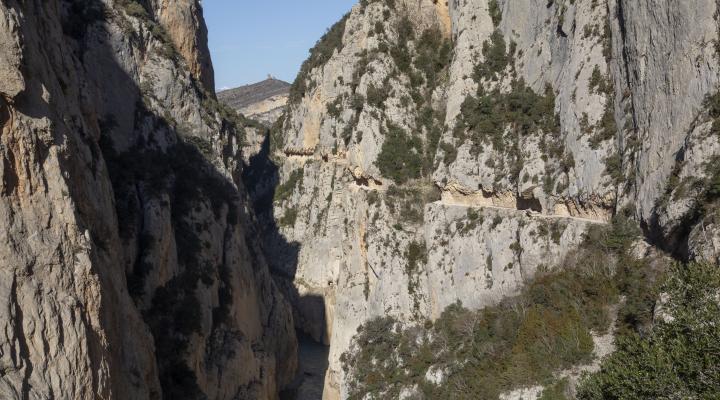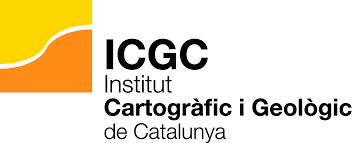
Mont-rebei gorge
When crossing the Montsec mountain range, the Noguera Ribagorçana river has created an immense cut of vertical walls, the Mont-rebei gorge, which opens to the south in an amphitheatre of impressive cliffs.
ALL THE SPACES IN THE NETWORKA changing landscape
Mont-rebei is a gorge on the southern slopes of the Pyrenees. This mountain range was formed during alpine orogenesis. For more than 50 million years, tectonic efforts were raising this mountain range, folding and crowding large rock units. One of these units is that of Montsec, where Mesozoic materials overlap with more modern (tertiary) materials. Broadly speaking, it forms a large syncline, and on its southern flank the Mesozoic carbonate rocks appear and on the core the detrital from the Tertiary period. These carbonated rocks give us the typical morphology of the Montsec, which stands out from afar thanks to its impressive cliffs. The incision of the Noguera Pallaresa and Ribagorçana rivers has divided Montsec into three (from l'Estall, Ares and Rúbies), forming narrow gorges in a north-south direction. The most spectacular is Mont-rebei, the westernmost, with impressive limestone walls of more than 500 m and widths of at least 20 m.
The landscape shows us how the layers of limestone sloping to the south, make up the terrain of Montsecs, culminating in the tops of Corona and Santa Lis (1,676 m), and descending gently north to the Juliana ravine. From this point on, the layers are softer and in more supple materials. The landscape changes, and it no longer as steep because Mesozoic limestones are replaced by Tertiary clays, loams and sandstones, with reddish and ochre colours predominating.
In Montsec, the abundance of carbonated rocks causes the water to infiltrate, forming numerous caves and chasms (called ‘gralleras’), with springs at river level.
